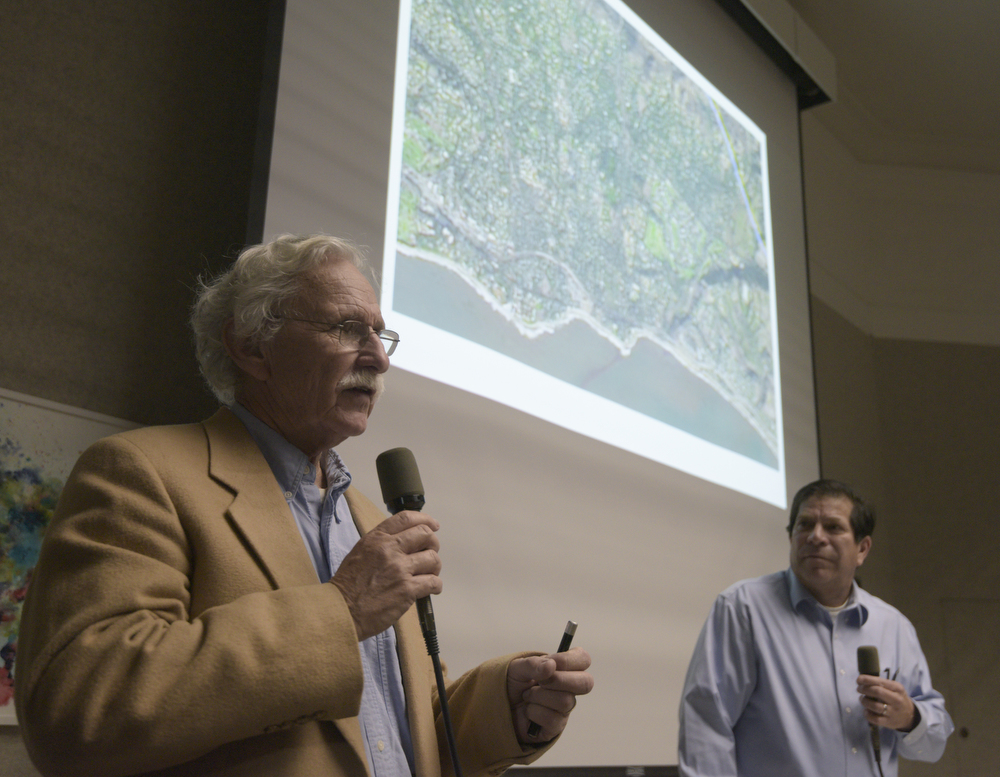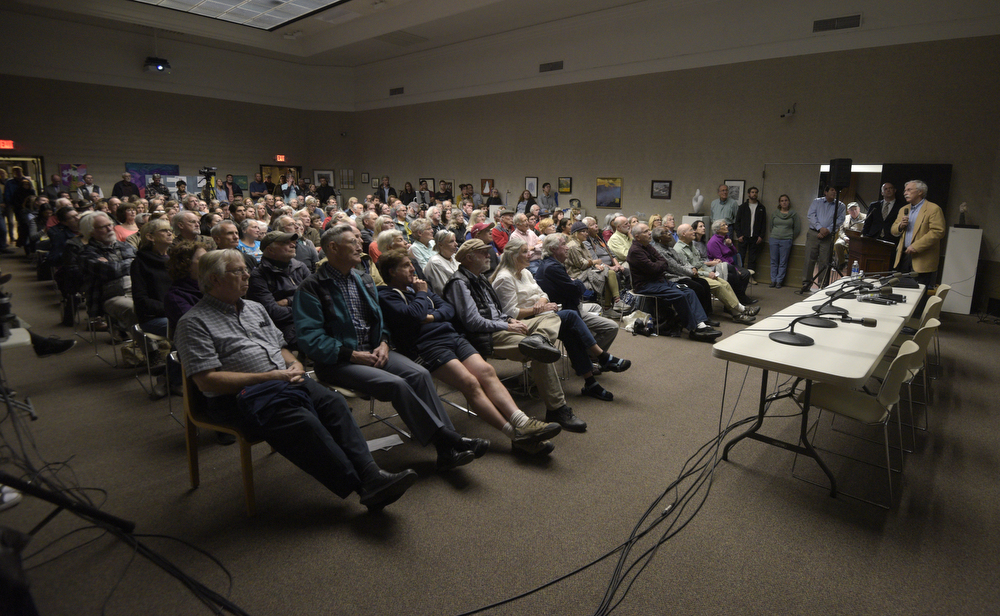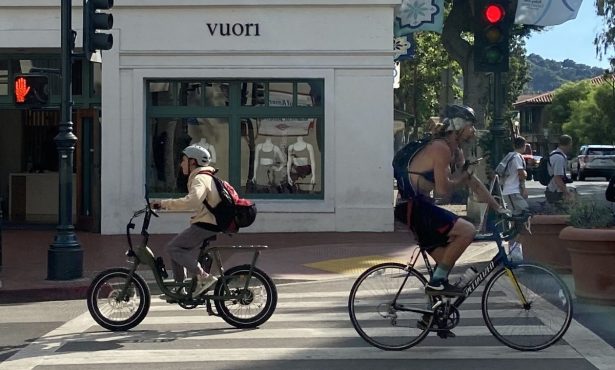A Professor Explains the Geology Behind the Montecito Disaster
Ed Keller Walks Us Through What Caused the Violent Mudslides in Santa Barbara County

In all the talk of fires, floods, and avalanches, I have yet to hear anyone say, “Those who fail to learn from geology are doomed to repeat it.” Too bad. It’s an aphorism just waiting to happen.
It also happens to be true.
I know this because I got to catch Ed Keller explain things at a recent forum held at the downtown library and sponsored by Urban Creeks Council and Citizens Planning Association. For the past 45 years, Keller has been teaching geology, all but three at UCSB. After all this time, Keller retains the gift of astonishment. More than 200 people showed up; 25 had attended the previous series forum in September. All seats were taken, every square inch of available table space perched upon. More than 30 people stood. No one left. Keller — white-haired and bespectacled — didn’t just pack the house; he rocked it.
People were desperate to understand the dimensions of the bus that had just run them over — geologically speaking. Keller — who knows Santa Barbara’s geology better than anyone alive — was eager to explain.
As a lecturer, Keller is entertaining, almost conversational, and above all clear. He pops with wonder at a subject that still surprises no matter how many times he’s seen it before. He barks. He laughs. He paces the stage. He doesn’t really need a mic. “Don’t call it a mudslide,” Keller repeatedly chided. “You can; I don’t care. But it’s not. It’s a debris flow.”
It may seem like a small point, but it’s not. When it comes to what just happened, language fails. The language of geology — because it’s so much more precise — has failed even worse.
Debris flow, indeed.
The term “debris” conjures images of twigs, bark, and dust comingled into some lazy heap. “Flow” evokes an intensity of motion lying somewhere between soothing and leisurely.
What came rushing down the Montecito hillsides the morning of January 9 was anything but lazy or leisurely. Centuries of accumulated boulders came crashing down a torrential river of mud, so thick and viscous it more resembled liquid concrete than water. When it came to bridges or other diversions, it rose 10-20 feet and went up, over, and around. The noise generated is awesome in the literal sense of the word, resembling freight trains and machine guns. “If you hear it coming,” he noted, “it’s probably too late.”
It was the most violent rain in 200 years, following the biggest wildfire in state history, on the heels of the most dehydrating and devastating drought in modern county history. The Thomas Fire left the top few inches of the front-country slopes baked and seared into a fine, crumbly powder. The sustained heat cooked the chaparral, coaxing from it a waxy liquid that oozed onto the soil and functioned like a sheet of glass. The rains struck with biblical fury. Six-tenths of an inch in five minutes. Imagine a downhill demolition derby with 10,000 John Deere tractors dive-bombing Montecito, disking the hillsides as they go.

What makes debris flows distinct is not just that they make 30-foot boulders appear to float downstream. It’s that the stream doing the “floating” is almost as dense as the boulders themselves. According to Keller, boulders exert 150 pounds per cubic foot. But the milkshake of mud exerts almost just as much: 120 pounds per cubic foot. Such events move in what’s called a “laminar flow.” This means debris flows don’t dissipate their energy load in the turbulence of splashing and churning, as flash floods do. Debris flows, as we painfully learned, do not recognize stop signs or artificial boundaries such as Highway 192. “They go from source to sink,” said Keller in an interview before his talk. “That’s basic geology.”
Keller and an impressive team of fellow geologists are now trying to determine just how fast that debris flow was hauling. They’ve got dash-cam images from the California Highway Patrol, but they need more. If you happen to have any — or know someone who does — Keller can be contacted at keller@geol.ucsb.edu. That visual information, they hope, will shed light on how the debris flow moved, how big it was, why it shifted direction when it did, why it surged, and what its source material was.
As Keller explained, “It all starts with the mud.” It takes eons of erosion — rain and wind hitting the slopes — to create enough powdered dirt to give rise to the volumes of mud capable of hoisting boulders. Some rock formations are more prone to erosion than others. It was Montecito’s grim misfortune, it turns out, to lie downslope from deposits of Cozy Dell shale, which tends to crumble much faster, for example, than sandstone.
Keller has evacuated three times from his home in Rattlesnake Canyon, itself the creation of an ancient debris flow — as is so much of Santa Barbara geology. He’s hoping to embed a 20-second video clip of debris flows in action into the next evacuation alerts. That way, he’s hoping, people will get the message and get out when they can. It’s a great idea. The obvious disconnect between the science of geology and the language of geology is cause for concern; the disconnect between that language and evacuation warnings is cause for alarm.
The geologic turmoil on January 9 was admittedly a very rare event. But so too was last year’s debris flow, which swept five cabins off their perches at the El Capitán Canyon campground and carried 15 cars into the thick viscous soup of El Capitán Creek. That rare event also happened to be triggered by an unusually violent rainstorm coming on the heels of yet another recent major wildfire, the Sherpa.
As such low-probability events begin to happen with increased frequency, Santa Barbarans can either learn from the geology. Or they can be doomed.
Who said that? I guess I did.



